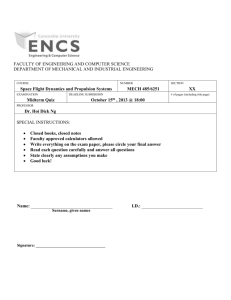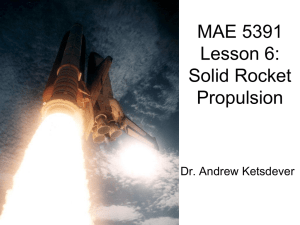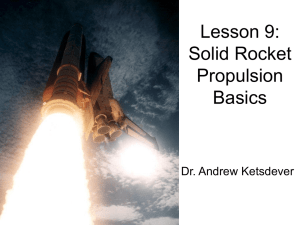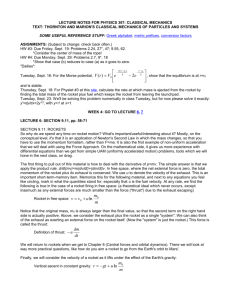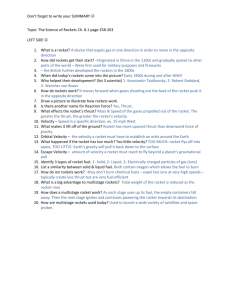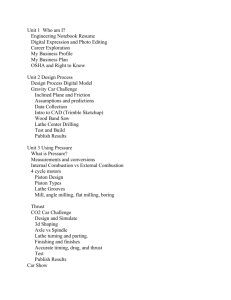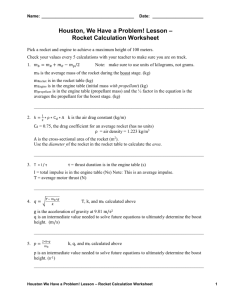2010 Exam 1
advertisement
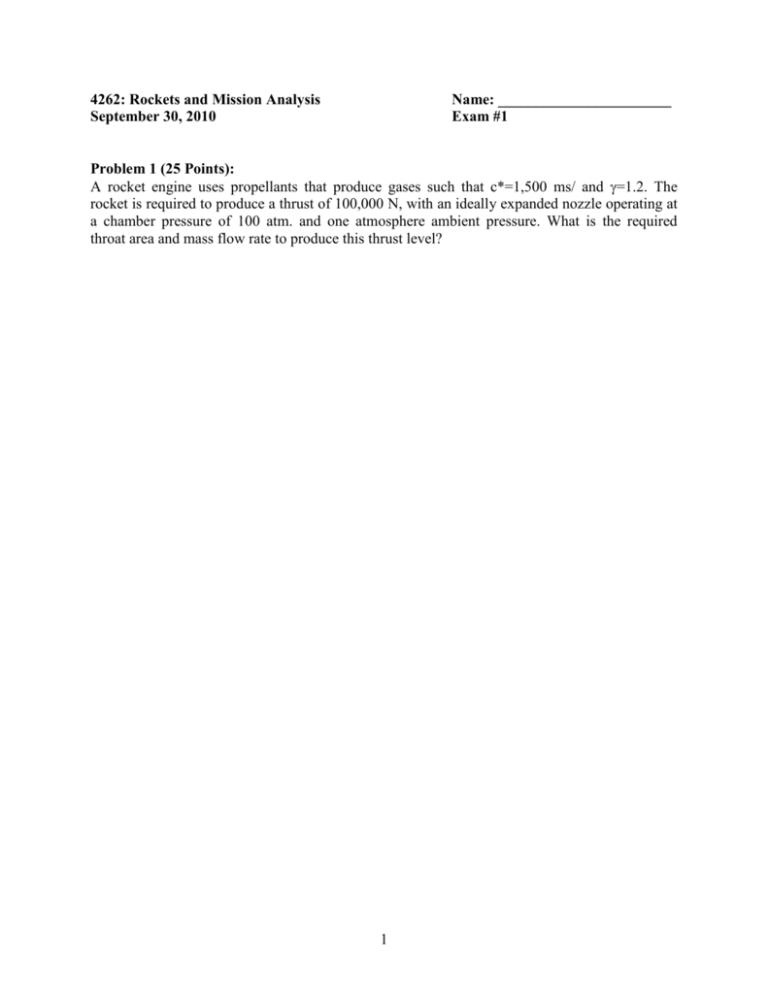
4262: Rockets and Mission Analysis September 30, 2010 Name: _______________________ Exam #1 Problem 1 (25 Points): A rocket engine uses propellants that produce gases such that c*=1,500 ms/ and =1.2. The rocket is required to produce a thrust of 100,000 N, with an ideally expanded nozzle operating at a chamber pressure of 100 atm. and one atmosphere ambient pressure. What is the required throat area and mass flow rate to produce this thrust level? 1 Problem 2 (25 Points): A rocket fired straight up from the Earth has an initial propellant mass equal of 5,000 kg, an exhaust velocity of 3,000 m/s, and initial thrust of 200,000 N. The initial mass of the vehicle is 10,000 kg. What is the velocity of the vehicle at burnout? You may assume constant gravity, ideal expansion throughout the flight profile and neglect aerodynamic drag. 2 Problem 3 (25 Points): Part 1: Using a propellant of molecular weight 15 and combustion chamber temperature of 3,300 K, determine the rocket throat and exhaust areas required for a thrust of 500 kN and an ideal specific impulse of 300 seconds. The ambient pressure is 0.1 MPa, and the specific heat ratio of the propellant is 1.4. Part 2: How much thrust would this rocket develop if the ambient pressure were changed to 0.03 MPa? Part 3: How much thrust would be developed by a rocket designed to expand to 0.03 MPa if it had the same stagnation conditions, throat area, and propellant? 3 Problem 4 (25 Points): A toy rocket containing water and compressed air has mass 0.20 kg when empty and can carry 1 kg of water. The initial air pressure within the rocket at launch is 0.35 MPa. Part 1: What is the minimum nozzle diameter that will permit vertical takeoff? Part 2: What is the specific impulse under these conditions? Part 3: Why is the water added? 4 Extra Page 5 Extra Credit for Exam 1 EC1 (10 Points): A rocket has the following parameters: Thrust = 6000 N Isp = 200 seconds Initial mass = 200 kg Burn time = 10 seconds Assume that the exit pressure is equilibrated with the atmospheric back pressure at all times, neglect drag, and assume gravity is a constant (use g=10 m/s2 if you want). 1. The condition of maximum propulsive efficiency for aircraft jet engines is the case where U=Ue, or the velocity of the vehicle is equal to that of the exhaust. Does this rocket see such a condition of maximum propulsive efficiency at any time during a vertical launch? 2. What is the velocity at burnout? 3. How much additional height does the rocket attain after burnout? EC2 (5 Points): Redo Exam #1 Question 1 using the full form of the momentum conservation equation. EC3 (5 Points): Complete the following 1. Regenerate H&P Figure 14.6, for eloss = 100 eV and 150 eV for all four propellants shown. Regenerate the Figure for eloss = 100 eV, 150 eV, and 200 eV for Hg and Xe. 2. Repeat for H&P Figure 14.7. 6



